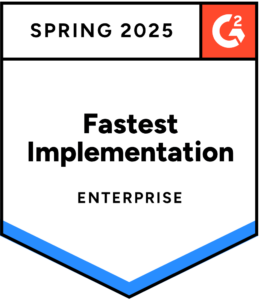How Healthcare Accounting Teams Can Evolve to Gain Efficiency and Effectiveness In Their Financials
Blog post
Share
Our healthcare organizations— hospitals, clinics, and the networks they’re part of— are one of the most important industries in our society. But the accounting and revenue teams that keep these organizations functioning are unnecessarily overburdened and inefficient because their technology is outdated.
Typically, healthcare accounting teams use manual processes and spreadsheets as the primary tool for their Record to Report. However, these methods are neither efficient nor effective, and can impact the revenue that these organizations generate. Here are four reasons traditional approaches to the healthcare Record to Report process can negatively affect the revenue cycle.
Multiple Payment Sources
One of the biggest challenges that healthcare accounting and revenue teams face is a high transaction rate. Not only do healthcare accountants need to track received and incoming patient payments, but they also must track insurance co-pays, claims processing, denied claims and different offered payment plans. If the patient belongs to a government program such as Medicaid, that’s another payer and claims process, adding an additional layer of complexity to the entire revenue cycle.
When this much information exists for a single patient, the effort an accountant must go through to sort and match those transactions is exponentially multiplied when multiple hospitals and clinic branches exist— all without a centralized repository of patient and financial information. The probability of fraud or misstatement is very high when large transaction volumes are coupled with manual processes.
Decreased Cash Collectability
These added complications of multiple, independent payment sources also affect revenue. Cash collectability is a frequent issue for healthcare offices of finance. They must factor in insurance claims as well as flagging down the patients’ payments. And if finance and revenue teams are relying on pen-and-paper, binder or spreadsheet methods, tracking these payments can be complicated. Oftentimes, this can result in missing transactions, and revenue for the healthcare organization can be lost.
Time-Consuming Credit Card Reconciliation
In this modern age, more patients are paying their healthcare bills with credit cards and many of these payments can be made in the medical patient portals. This increases the complexity of the reconciliation process because it adds to the amount of tasks and accounts that healthcare accountants have to sort through. And when accounting and finance teams are functioning on strict deadlines, these credit card transactions can be a heavy, time-consuming burden.
Difficult Journal Entry (JE) Adjustments
When your accounting team processes potentially thousands of journal entries with a traditional JE process, manually adjusting certain entries is not only tedious and time-consuming, but a great pain. A manual JE process is also risky because it tends to lack controls, proper approvals and management has no visibility of outstanding or rejected journals.
An Automated Approach to Healthcare Accounting
Utilizing outdated approaches in your healthcare organization’s Record to Report unnecessarily burdens your accountants and increases your risk of fraud and compromised financial security. Cadency by Trintech, an automated solution, has several benefits, such as:
- Decreasing time spent on transaction matching by 60%
- Reduction in cash shortages and potential fraud by 40%
- Decreasing time spent on JE adjustments by 20%
- Lowered risk in revenue impact due to misstatements by 14% (with the full solution)
Other benefits that Cadency gives healthcare accounting and revenue teams is more time to spend on value-adding activities, visibility into the entire Record to Report process and more substantial controls across all financial processes.
To learn more about how Cadency can add efficiency and effectiveness to your Record to Report, take a look at the white paper.
Written by: Ashton Mathai







